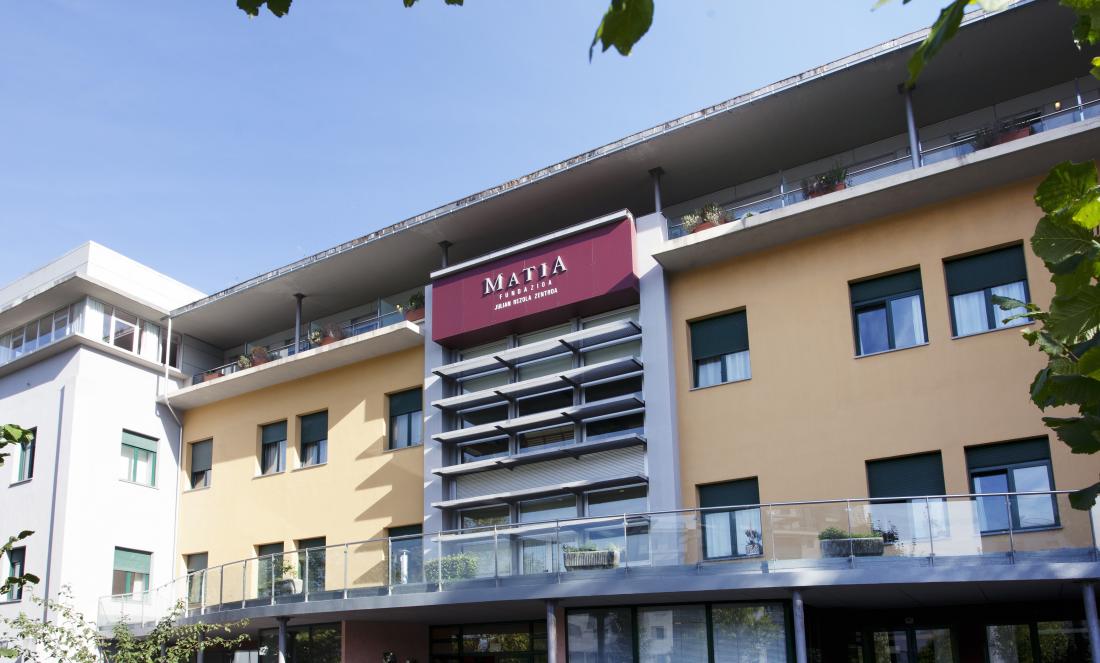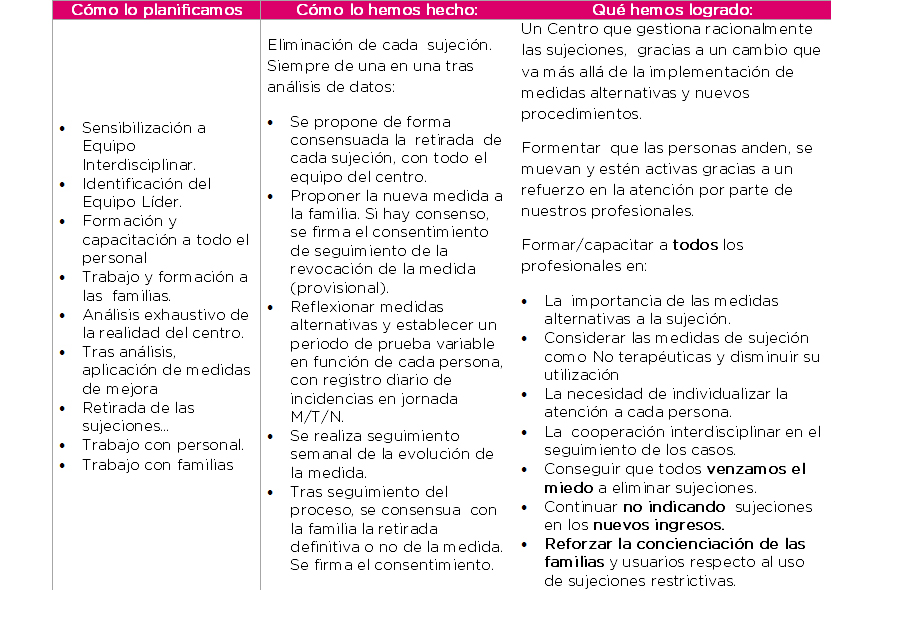
TOWARDS A CLAMP-FREE CENTRE
Within the application of the person-centred care model, we find a fundamental area of approach: "The rational use of physical and/or chemical restrictions". Given the important impact of these restrictions on the quality of life of the people living in our centre, their approach helps to maintain their dignity, allowing their autonomy and promoting their independence
Under this premise, we started at the beginning of 2010, the path towards the achievement of a Centre in which the Rational Use of Subjections was one of the main objectives of the attention. This process has required a change that goes beyond the implementation of alternative measures and new procedures. We have worked for a real transformation in the work philosophy, in which it has been necessary to incorporate flexibility as a factor that has allowed us to adapt the activities to the needs of each person.
Below is a summary of what we have done:

Three years ago, our centre registered 37% of people with some kind of restraint. This percentage was set by our protocol of action and acting on it was the right thing to do for our residents.
The implementation of the project and the consequent cultural change assumed by all the professionals in the centre has allowed us to ensure that at present no user has any kind of support (70% of admissions during this period show cognitive deterioration, and 43 of them suffer from dementia, which in some cases leads to behavioural disorders).
The path towards a centre free of restraints has meant a reinforcement of attention. One of the greatest difficulties in tackling the cultural change associated with the elimination of restraints has been the perception by all the professionals at the centre that this reinforcement in care would only translate into an increase in the staff ratio. In order to minimize this perception, the training has been very much oriented towards raising awareness of the importance of alternative measures to restraint, the need to individualize the attention to people and the interdisciplinary cooperation in the follow-up of cases in order to obtain the best solution for each one of them.
The success of the implementation of the project has been thanks to the involvement and commitment of all the people working in the centre and has allowed us to extend this good practice to all Matia Fundazioa centres. We believe that the model applied is a model of care worthy of the people served, but very complicated, and that it needs time, dedication and a lot of involvement from all the professionals and all the families to implement and maintain it.
Do you agree? How do you manage the restraints in your centres?

Add new comment